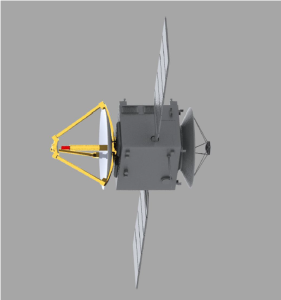Solar pumped cryocooler with electrical power recuperation

Solid state optical refrigeration is the only active cryocooling technique that is truly vribration free, due to absence of moving parts and mass transport, with significant potential for use in future space missions. However, the overall wallplug efficiency is still relatively low in current approaches. One alternative approach investigated here is using a solar pumped laser (SPL) to drive the optical cryocooling process. This approach could offer higher efficiency by eliminates two conversion losses.
Objectives
The overall objective of the project was to evaluate realistic overall system performance for a solar pumped optical cryocooler with electrical recuperation. The analysis was performed on a system with following components; (1) solar concentrator, (2) solar pumped laser (SPL), (3) optical cryocooler; and (4) electrical power recuperator. The main performance output parameters are full system efficiencies over a range of operating condition, operating temperature(s), electrical power generation, size, weight and space deployment projections.
Achievements and status
In order for a SPOC system to be competitive, a significant increase beyond the state of the art in SPL is needed. Three specific areas of improvement in SPL systems were identified: (i) aberration free solar concentration; (ii) focused solar radiation trapping in the laser gain medium, and (iii) use of broadband absorption and efficient transfer to emitter. Detailed analysis on several concentrator and laser concepts shows that a significant improvement in SPL efficiency by a factor >3 is feasible, with respect to reported current SPL records, by implementing specific improvement in the three areas above. Similarly, analysis of SPOC system efficiency shows significant improvement in efficiency over current optical cryocooling approaches is feasible. The increase in efficiency also translates into significant reduction in system mass.
Benefits
Potentially significant increase in SPL system efficiency, both on the basis of feasibility analysis and according to thermodynamic limit. Similarly, specific SPOC implementations allow significant improvement in overall system efficiency compared to current approaches, translating similarly in a significant reduction in system mass.
Next steps
The next goal is to demonstrate significant improvement in SPL efficiency beyond the state of the art, preferably by a factor >2-3. Such a demonstration would be critical to demonstrating the potential benefits of SPOC, and would elevate the approach to TRL3.
